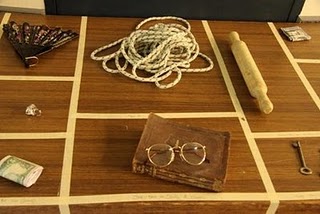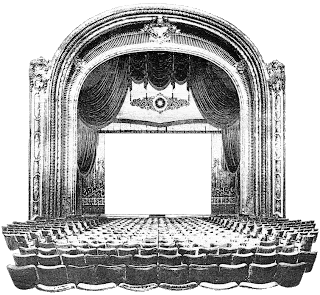· Darkness – it can cause actors to become anxious as it can be dangerous to move around in blackout
· Unstable screening – the immaculate sized backgrounds need to be positioned in stable as it changes during the performance
· Using power tools for construction – for anyone taking on responsibility to use the tools they should ensure they are not left unattended on left plugged in. Helmets, gloves etc should be worn and lose items on yourself such as a tie, long hair etc are tied up.
· Props getting lost, damaged or confused for its use – each prop is very important and is made for purpose
By thoroughly going over these risks my group and I were able to think of a few solutions which could come to our advantage:
· Use of torches backstage during blackout
· All stage furniture has a mark taped on the floor so all the crew can acknowledge where it is allocated
· Scenery is braced and made stable
· Usual health and safety rules apply to safe use of power tools e.g. wearing goggles, cutting away from your body etc
· Props are kept on a special table and logged in and out by the prop manager
· Have a first aid kit
.
By investigating the issues of risks that may arise we were able to come up with solutions. By doing this we had some conciliation that everyone safe. During rehearsals the procedure for if a fire alarm went off and where the closest fire exits were located were announced. Health and safety is very important and teachers have a legal obligation to ensure all backstage helpers, actors and the audience are in a safe environment
Pre Production
Risk | Solution |
Use of power tools | wear safety clothing/goggles |
Cutting equipment | use cutting mats |
Slippery surfaces | indicate clear signs |
Use of paint and glue | use water based |
Heavy lifting | work in groups, bend knees not backs |
Ensure that plants are safe to use | make sure he had easy access to enter and exit, no sharps bits, did not get dehydrated if it got too hot etc |
Production
Risk | Solution |
Stage blackout, tripping/falling/colliding | use of torches, all scenery positions clearly marked on the floor |
Height hazard, falling off stage | use of barriers, clear announcements to cast/crew, pulling curtains during blackouts |
Moving scenery around, position/remove/change | allocate specific job roles |
Crowd control | controlled tickets sales, security, staff on the door, clear signs, research the seating limit in the venue, seating plan |
Fire | clear announcement and signs, usual fire precautions |
Props being misused/lost | keep props(inc. weaponry) on specific tables, keep a log book under control of the manager |
Actors don’t get too hot | Have an interval during the production |
By investigating the issues of risks that may arise we were able to come up with solutions. By doing this we had some conciliation that everyone safe. During rehearsals the procedure for if a fire alarm went off and where the closest fire exits were located were announced. Health and safety is very important and teachers have a legal obligation to ensure all backstage helpers, actors and the audience are in a safe environment


































